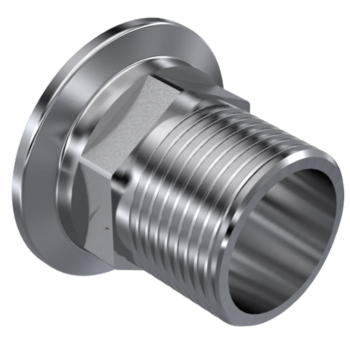Blind Flanges Suppliers
ASME B16.5, B16.47, EN 1092-1
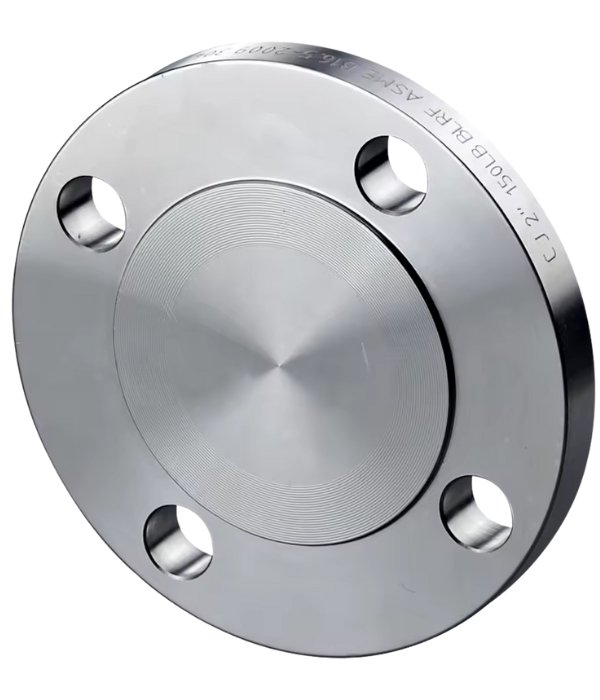
ASME B16.5 Blind Flanges: Dimensions | Specifications | Material Grade | Standards | About Dummy Flange | All Product Types
Blind Flanges, often referred to as dummy flanges or blank flanges, are solid plate-type fittings used to seal the ends of pipelines, valves, or pressure vessel openings. They play a critical role in systems where future expansion or maintenance access is required, allowing easy disconnection without disturbing the piping layout. Unlike other flange types, blind flanges have no center bore, which makes them ideal for completely isolating a piping section or terminating a pressure system.
At Nutech Overseas, we specialize in manufacturing BLRF (Blind Raised Face Flanges) and BLFF (Blind Flat Face Flanges) with a focus on dimensional accuracy, sealing performance, and material durability. All our blind flanges are produced under international flange standards, including ASME B16.5, ASME B16.47 Series A & B, MSS-SP-44, EN 1092-1, BS 4504, and DIN specifications.
We offer a comprehensive size range from ½″ NB to 60″ NB and pressure classes including Class 150, 300, 600, 900, 1500, and 2500. These flanges are widely available in various materials such as Stainless Steel (304, 304L, 316L, 321, 347, 904L), Carbon Steel (A105, A350 LF2), Low Alloy Steel (F11, F22, F91), Duplex and Super Duplex (UNS S31803, S32205, S32750), and High Nickel Alloys (Inconel, Hastelloy, Monel, Alloy 20, etc.).
Each blind flange is carefully machined with the appropriate face type (RF, FF, or RTJ), drilled per ANSI templates, and tested according to ASME, IBR, NACE MR0175, ISO, and PED requirements. They are primarily used in high-pressure pipelines, oil and gas facilities, petrochemical refineries, power stations, desalination plants, and marine piping networks, where a permanent or temporary shutoff is essential.
Whether you require standard or custom blind flanges, Nutech Overseas ensures prompt delivery with worldwide exports to USA, Germany, UAE, Italy, Saudi Arabia, and beyond, backed by detailed documentation and third-party inspection certifications.
Blind Flange Manufacturer & Exporter – ANSI B16.5 / B16.47 BLRF & BLFF Flanges in Stainless Steel, Carbon Steel & Duplex Grades.
For complete technical details, including dimensions, pressure rating classes, weight charts, sizes, tolerances, and material specifications of our ANSI B16.5 Blind Flanges, please download the full Catalog PDF below.
High-Pressure Blind Pipe Flanges (Dummy Flanges) – Class 150 to 2500 | Sizes ½″ to 60″ | Raised Face (RF), Flat Face (FF), RTJ – EN 1092-1, DIN, BS 4504.
Technical Specifications of Blind Flanges
| Specification | Details |
|---|---|
| Type | Blind Flange (BL), Raised Face (BLRF), Flat Face (BLFF), Ring Type Joint (RTJ), Dummy Flange |
| Design Standard | ASME B16.5, ASME B16.47 Series A & B, MSS-SP-44, BS 4504, EN 1092-1, DIN Series, ISO 7005 |
| Size Range | ½″ NB to 60″ NB (DN15 to DN1500) |
| Pressure Ratings | Class 150, 300, 600, 900, 1500, 2500 (PN6 to PN400) |
| Face Type | Raised Face (RF), Flat Face (FF), Ring Type Joint (RTJ) |
| Flange Thickness | As per ASME / EN / DIN dimensional and pressure class specifications |
| Function | Designed to close pipe ends or isolate pressure systems; commonly used in inspection ports and testing |
| Surface Finish | Stock finish (3.2–6.3 μm), Smooth face, Spiral Serrated, Concentric Serrated |
| Gasket Compatibility | Full Face, Raised Face, Spiral Wound, Metal Jacketed, Ring-Type Joint Gaskets |
| Drilling Template | Matches bolt-hole patterns of companion flanges (per ANSI B16.5 / B16.47 / EN 1092-1) |
| Coating / Protection | Black Paint, Yellow Transparent Varnish, Hot Dip Galvanized, Anti-rust Coating (on request) |
| Testing & Inspection | Hydro Test, PMI, UT/MPI (as required), Dimensional Verification, Visual QC |
| Certification | EN 10204 Type 3.1 / 3.2, IBR Approval, ISO 9001, PED 2014/68/EU, NACE MR0175 / ISO 15156, ISO 9001 |
| Application Industries | Oil & Gas, Petrochemical, Power Generation, Water Treatment, Marine, Food & Beverage, Refining, Fire Protection Systems, Pulp & Paper, Shipbuilding, HVAC, Offshore Platforms |
| Origin | Made in India (by Nutech Overseas) |
| Export Network | USA, Europe, and Middle East |
Complete Material Grade Chart - Class 150 Blind Flange
| Material Category | Blind Flange Grades |
|---|---|
| Stainless Steel Blind Flange | ASTM A182 F304 / F304L / F304H, F316 / F316L / F316Ti, F310, F309S, F317 / F317L, F321 / F321H, F347 / F347H, F904L, ASTM A351 CF3 / CF3M / CF8 / CF8M / CF8C, DIN 1.4301, 1.4306, 1.4307, 1.4311, 1.4401, 1.4404, 1.4408, 1.4409, 1.4541, 1.4571, 1.4550, 1.4435, 1.4539 |
| Duplex Steel Blind Flange | ASTM A182 F51 / F52 / F53 / F54 / F55 / F57 / F59 / F60 / F61, UNS S31803 / S32205 |
| Super Duplex Steel Blind Flange | ASTM A182 F53 / F55 / F57 / F59 / F60 / F61, UNS S32750 / S32760 |
| Carbon Steel Blind Flange | ASTM A105 / A105N, ASTM A350 LF2, ASTM A694 F52 / F56 / F60 / F65 / F70 / F80, ASTM A216 WCB, DIN 1.0460 / 1.0402 / 1.0619, Die Steel, Mild Steel |
| Alloy Steel Blind Flange | ASTM A182 F5 / F9 / F11 / F12 / F22 / F91, AISI 4130 / 4140 |
| Nickel Alloy Blind Flange | Nickel 200 / 201, ASTM B564 |
| Monel Blind Flange | Monel 400 (UNS N04400), Monel K500 (UNS N05500), ASTM B564 |
| Inconel Blind Flange | Inconel 600 / 601 / 625 / 690 / 718 / 783 / X750, ASTM B564 |
| Incoloy Blind Flange | Incoloy 800 / 800H / 800HT (UNS N08800), Incoloy 825 (UNS N08825), Incoloy 925, ASTM B564 |
| Hastelloy Blind Flange | Hastelloy C276 (UNS N10276), C22 (UNS N06022), C4, C2000, B2, B3, X, ASTM B564 |
| Alloy 20 Blind Flange | Alloy 20 / 20Cb-3, Carpenter® 20, ASTM B462 |
| 254 SMO Blind Flange | SMO 254 / 6Mo, UNS S31254, DIN 1.4547, ASTM A182 |
| Copper Nickel Blind Flange | Copper Nickel 90/10 (C70600), 70/30 (C71500), UNS C71640, ASTM B61 / B62 / B151 / B152 |
| Copper Blind Flange | TP1, TP2, T1, T2, C10100–C12300, C14200–C17200, C21000–C71520, including C10930, C11000, C11400, C12000, C12200, C26000, C28000, C33000, C44300, C70600, etc. |
| Brass Blind Flange | Grades 3602, 2604, H59, H62, etc. |
| Aluminium Blind Flange | Aluminium Grades 5052, 6061, 6063, 2017, 7075, etc. |
| Titanium Blind Flange | ASTM B381 Gr.1 / Gr.2 / Gr.4 / Gr.5 / Gr.7, UNS R50250 / R50400 / R50550 / R50700 / R52400 / R53400 / R56320 / R56400 |
| Other Special Grades | Al6XN, Tin Bronze, Aluminium Bronze, Lead Bronze, Nimonic 75 / 80A / 90 |
International Flange Standards We Manufacture & Supply
Blind flanges are often referred to as dummy flanges or blank flanges in the industry due to their specific function — sealing off the end of a piping system or a nozzle opening.
Here’s what differentiates them:
- No Opening/Bore: Unlike other flanges, blind flanges have no center hole, making them ideal for terminating pipelines or isolating a system section during maintenance.
- "Dummy" Usage: The term dummy flange is commonly used when the flange is installed temporarily for testing, pressure checks, or future expansion plans.
- Blanking Off System Lines: The phrase blank flange refers to its role in acting as a solid plate that blocks flow completely — often used in shutdowns or inactive pipeline segments.
- Interchangeable Terms: Although the names differ by region or industry habits, all refer to the same type of solid, non-bored flange that ensures a secure closure.
While weld caps and pipe plugs can also seal a pipe end, blind flanges offer key advantages in terms of maintenance, accessibility, and pressure handling.
Here’s why blind flanges are often preferred:
- Removability: Blind flanges are bolted and can be easily removed for inspections, pressure testing, or cleaning, unlike welded caps that require cutting and rewelding.
- Inspection Friendly: When testing pressure vessels or pipelines, blind flanges provide a tight seal that can later be unbolted to access the line.
- Stronger Seal: Compared to threaded or screwed plugs, blind flanges can withstand higher pressure ratings, especially in ANSI Class 600 to Class 2500 systems.
- Code Compliance: Blind flanges are available in standardized dimensions (ASME B16.5, B16.47, EN 1092-1, etc.), making them ideal for critical installations that must meet international codes.
This makes blind flanges the go-to option in systems requiring frequent disassembly, high integrity sealing, or large-diameter pipe closures.
Yes, blind flanges are specifically designed to withstand full system pressure — even in high-pressure piping systems — as long as they are selected according to the correct pressure class and material grade.
- Pressure Class Ratings: Blind flanges are available in Class 150, 300, 600, 900, 1500, and 2500 as per ASME B16.5, and PN6 to PN400 in EN 1092-1, enabling them to handle anything from low-pressure water lines to high-pressure oil and gas pipelines.
- Uniform Thickness: Unlike other flanges, blind flanges are solid discs with a uniform cross-section, offering better resistance against pressure without stress concentration at the center.
- Hydrostatic Tested: Quality manufacturers, like Nutech Overseas, ensure each blind flange is hydro-tested and meets international testing norms to withstand the designated pressure safely.
- Material Choice is Crucial: High-pressure systems often require carbon steel, alloy steel, duplex, or Inconel blind flanges, depending on the operating environment.
Proper installation, correct pressure class, and quality assurance are key factors to ensure blind flanges safely handle full system pressure.
The choice between BLRF (Blind Raised Face) and BLFF (Blind Flat Face) flanges depends on the gasket type, mating flange, and pressure application:
BLRF – Blind Raised Face Flange:
- Common in high-pressure applications
- Compatible with spiral wound gaskets and metal gaskets
- Provides better sealing performance due to the raised surface, which concentrates pressure on a smaller gasket area
- Widely used in oil & gas, petrochemical, and offshore industries
BLFF – Blind Flat Face Flange:
- Recommended for use with cast iron or fiber-reinforced plastic (FRP) components
- Requires full-face gaskets for sealing
- Typically used in low-pressure systems or where the mating flange has a flat face
Key Tip: Never mix a raised face flange with a flat face flange — it can lead to misalignment, poor sealing, and even damage during bolting.
Choosing the right material for a blind flange depends heavily on the fluid type, operating temperature, and environmental conditions.
Common Materials Based on Application:
- Stainless Steel (SS 304 / 316):
Excellent for general corrosion resistance in industries like food processing, water treatment & pharmaceuticals.
- Duplex & Super Duplex (UNS S31803 / S32750):
Ideal for chloride-rich and offshore applications due to their high strength and pitting resistance.
- Carbon Steel (A105 / A350 LF2):
Widely used in non-corrosive environments, oil & gas, and structural pipelines under moderate pressure.
- Alloy Steels (F11, F22, F91):
Suitable for high-temperature and high-pressure services in refineries, power plants, and heat exchangers.
- Nickel Alloys (Inconel, Monel, Hastelloy):
Specifically chosen for acidic media, extreme heat, or oxidizing conditions.
Why It Matters?
Incorrect material selection can lead to:
- Rapid corrosion or cracking under stress
- Pressure failures in high-temperature systems
- Reduced service life and costly downtime
Always ensure compatibility with ASME, NACE, or client-specific requirements during procurement.
Not always — while blind flanges are built to be robust and are often reused in low-risk environments, their reusability depends on several technical factors:
Key Considerations for Reuse:
- Gasket Surface Condition:
The sealing face (RF, FF, or RTJ) must be free from scratches, dents, or corrosion. Even minor damage can compromise sealing integrity during reuse.
- Material Fatigue or Deformation:
If the flange has been exposed to high temperature, pressure cycles, or mechanical stress, it may suffer from distortion or fatigue, making it unsafe for reuse.
- Bolt Hole Alignment:
Distorted bolt holes or worn-out threads can affect flange performance and proper re-tightening.
- Inspection Required:
Reused flanges should undergo visual inspection, dye penetrant testing (DPT), or ultrasonic testing (UT) to ensure structural integrity.
Recommended Practice:
For critical service applications such as oil & gas, chemical, or offshore pipelines, it is generally recommended to use new blind flanges to guarantee safety, reliability, and compliance with industry standards like ASME B16.5 and NACE MR0175.
At Nutech Overseas, we proudly export our high-quality blind flanges to a diverse range of international markets, ensuring timely delivery and global compliance with industry standards.
Export Network Highlights:
- United States:
Supplying to major petrochemical plants, pipeline projects, and offshore facilities across Texas, Louisiana, and California.
- Middle East (UAE, Saudi Arabia, Qatar):
Trusted by EPC contractors and refineries in Dubai, Abu Dhabi, Dammam, and Doha for NACE-compliant and IBR-approved blind flanges.
- Europe (Germany, Italy, Spain, France):
Catering to energy, shipbuilding, and water treatment sectors with custom flange solutions conforming to EN 1092-1 and PED 2014/68/EU requirements.
Why Global Clients Choose Us:
- Ready stock in Class 150 to 2500 in BLRF & BLFF variants
- Support for urgent shutdowns and bulk orders
- Complete documentation: EN 10204 3.1 / 3.2, CE, IBR, NACE, ISO 9001
Whether it’s a small batch for a local facility or large-scale project exports, Nutech is a trusted manufacturer and global exporter of Blind Flanges.
Browse The Products
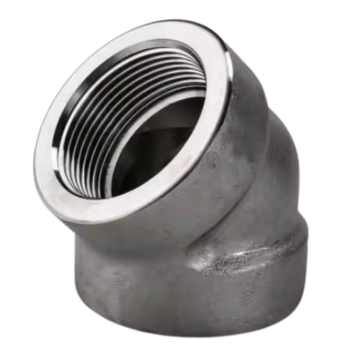
Forged Fittings
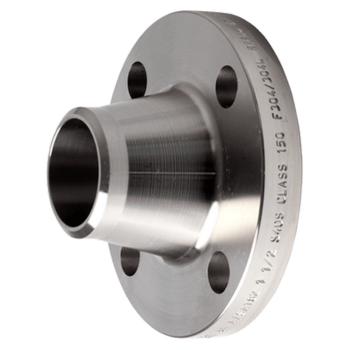
Flanges
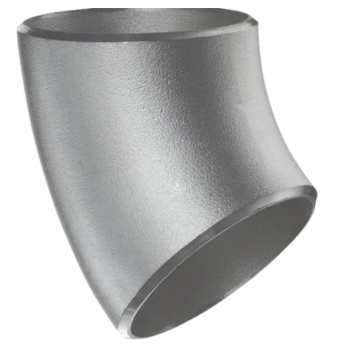
Buttweld Fittings
